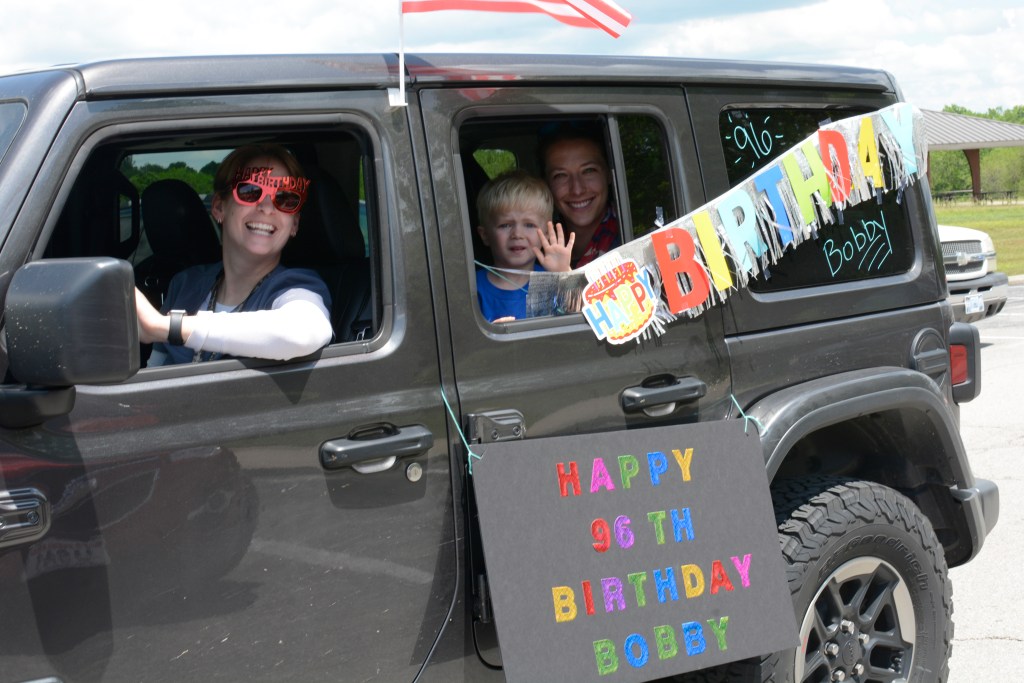‘Horrific and devastating’: State officials reflect on Thomson-Hood tragedy
Published 12:59 pm Wednesday, January 6, 2021

- Bobby Rorer's family celebrated his birthday at Thomson-Hood Veterans Center last year. Rorer was one of the many veterans who later died of COVID-19.
|
Getting your Trinity Audio player ready...
|
On May 29, Thomson-Hood Veterans Center had a parade for its residents. It happened to be resident Bobby Rorer’s 96th birthday, and his family celebrated by participating in the drive-by celebration and visiting him outside his window. Rorer died of COVID in October. He was one of 34 residents of the long-term care facility who lost their lives to the disease. (Photo by Randy Patrick)
The last Friday in May was a good day for Bobby Rorer and his family. It was his 96th birthday, and it happened to coincide with a parade to celebrate the residents of Thomson-Hood Veterans Center.
His family were part of the parade, and they visited him outside his window.
Four and a half months later, Rorer, who had survived World War II in the South Pacific, lost his fight against a more insidious enemy. He was one of 34 residents of the state-run nursing home in Wilmore who died this year of COVID-19.
On Dec. 21, members of the community held a memorial for the victims. The next day, Thomson-Hood residents were among the first long-term care patients in the state to get the new coronavirus vaccine.
The outbreak that began in October has been halted. There have been no new infections of residents since Nov. 13, and as of Dec. 28, there are only three active cases involving staff.
Mark Bowman, executive director of the Office of Kentucky Veterans Centers, described what happened at Thomson-Hood as “horrific.”
“In almost 30 years in long-term care, I’ve never, ever seen anything like this,” he said.
“It’s the most devastating thing that you could ever witness. The loss of our veterans — it is truly like a war,” Bowman said in an online interview with The Jessamine Journal that also included Eric Friedlander, secretary of the Cabinet for Health and Families.
It has been especially hard for families who are separated from their loved ones because of the quarantine, but it has also been hard on the staff, some of whom have worked there since the home opened in 1991, and they have become like family to the residents, Bowman said.
“I have looked in the eyes of our staff and seen the tears, the pain, the frustration because they’re fighting something that they can’t see and they know how dangerous it is,” Bowman said. Though they wouldn’t admit it, they are “heroic,” he said, because they have families of their own that they worry about spreading the virus to, yet they come to work every day and provide care for the residents. “Their courage is unbelievable,” he said.
None of the other state veterans homes in Kentucky has experienced anything like the loss Thomson-Hood has. The Paul E. Patton Veterans Center in Hazard and the Joseph “Eddie” Ballard Veterans Center have each lost one patient, and the Radcliff Veterans Center has had no deaths from COVID. Why Wilmore?
Friedlander said he doesn’t blame the staff at Thomson-Hood, he blames the public.
“I blame it on us for letting our guard down” and not doing the things people should do to contain the virus, such as avoiding crowds and wearing masks and keeping several feet of distance when around others.
“Community spread is the biggest driver here,” he said.
All it takes is for one person to bring it into the facility and unknowingly infect others, and it can then multiply rapidly.
“We weren’t doing anything different” at Thomson-Hood than they were doing at any of the other veterans’ homes, Bowman said. “The other facilities were fortunate.”
Bowman said the staff was able to keep the virus out of the veterans home for the first six months of the pandemic that began in March, but then as they began to see a spike in the incidence rate in late summer, there were a few cases at Thomson-Hood. But it wasn’t until October, when two staff members became infected that the virus swept through the part of the building where they worked, even though residents who tested positive were isolated and those with symptoms were transferred to the federal Veterans Administration hospital in Lexington.
Within days, residents started dying.
There was a staffing shortage because of the quarantine. Early on, they had more than 40 employees out at one time and had to bring in help from other veterans homes and temporary staffing agencies.
Bowman said Thomson-Hood couldn’t have gotten through it without help from the Jessamine County Health Department, the Kentucky Department for Public Health, the inspector general’s staff, the Federal Emergency Management Agency and the VA.
Many of those who answered “the clarion call” were people with experience in dealing with disasters.
“Not only did we get highly qualified staff in a time of need, but we also … learned so many lessons,” Bowman said.
“We thought we were doing everything right” by keeping employees isolated, Friedlander said, but then they learned that they were getting together in the break room and were carpooling.
“It’s those types of things, that level of detail, that you gain with experience,” he said.
They made adjustments that helped reduce the spread of the virus. Within a month, they had mostly gotten it under control, but only after great loss.
“We feel that we are in the recovery stage, and we hope and pray that we stay there,” he said.
Educating the staff, doing extensive contact tracing and aggressive vaccination should help, but the threat is still there, Friedlander and Bowman said.
“We are telling our staff and our families and anybody else that’ll listen, there’s light at the end of the tunnel. The vaccine is the beginning of the end. But we still have to maintain everything else that we have worked so hard to do to finish this, and it is still a ways off. So we don’t want people to get complacent.”
“I liken it to running a marathon and seeing the finish line and quitting,” Friedlander said.
Bowman said he is proud of his staff, especially in how they handle end-of-life situations.
He said the veterans home allows family to be with their loved ones in their final moments, but some choose not to be, because they are afraid of being infected or for other reasons. But if a family member can’t be with them, someone from the veterans home will be.
“They see that somebody’s got to be there for our veterans, because nobody wants to be alone in those difficult times,” he said.
“It’s a silent and deadly enemy.”
“No matter how much you prepare and think you’re ready, this thing is unlike anything anybody has ever seen.”





